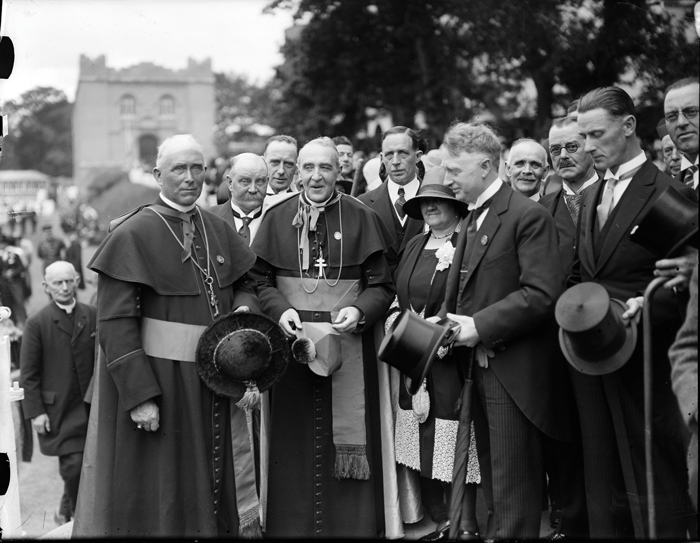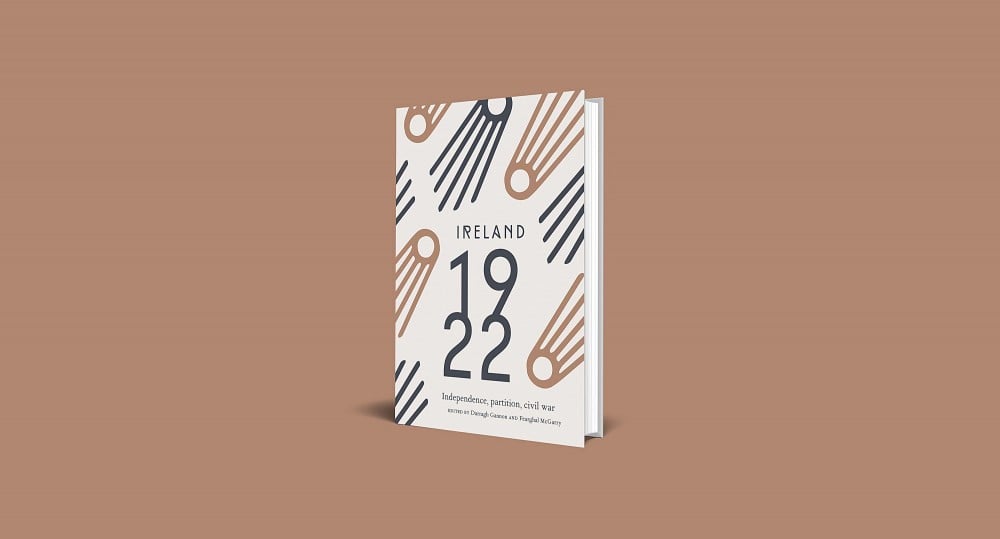10 October 1922: The Bishops Condemn the Republican Campaign
Weaponising The Sacraments: The Roman Catholic Church and Civil War
by Daithí Ó Corráin
On 10 October 1922 the Irish Roman Catholic hierarchy issued a pastoral letter that strongly condemned the anti-Treaty republican side in the Irish civil war and upheld the Anglo-Irish Treaty of 1921. Abjuration of violence, obeisance to the legally constituted government, condemnation of partition, advocacy of majority rule, and support for order and social stability characterised the political stance of the hierarchy between 1918 and 1923. The bishops’ influence on public opinion during the turbulent Irish revolution should not be overstated, however. Powerful denunciations of violence, whether perpetrated by republicans or the British government, went unheeded during the War of Independence and did not halt killing, destruction of property or dislocation of law and order. While this also pertained during the civil war, the situation differed in one vital respect: for the first time, the Catholic hierarchy was ‘sustaining’ and reinforcing the authority of an Irish state.¹
Predictably, the bishops welcomed the Treaty and favoured its ratification. On 13 December 1921 the hierarchy issued a careful statement that praised the ‘patriotism’ and ‘honesty of purpose’ of the Irish negotiating team and expressed the hope that when Dáil Éireann began its deliberations (the following day) its members would ‘have before their minds the best interests of the country’.² As opposition to the settlement intensified during increasingly bitter parliamentary debates, Cardinal Michael Logue, archbishop of Armagh and primate of All Ireland, and his brother prelates exerted political and moral pressure on TDs to uphold majority opinion and support the Treaty. For example, Archbishop Edward Byrne of Dublin tried, unsuccessfully, to persuade Éamon de Valera to accept the agreement. On New Year’s Day 1922 Logue declared that the settlement gave everything necessary for the progress of the country and prayed that God would preserve Irish people from ‘the disaster that rejection of the Treaty would bring’.³
Although the Treaty was ratified by the Dáil on 7 January 1922, the deteriorating political and military situation alarmed the hierarchy. Acutely conscious of the political opportunities at stake, many bishops used their February Lenten pastorals to bolster support for the Treaty. For Archbishop John Harty of Cashel, the benefits of the Treaty far overweighed its limitations, none more so than ‘England’s renunciation of its claim to govern Ireland’. Likewise, Archbishop Byrne emphasised that the ‘unintelligent rule of men alien to us in blood and traditions’ would be replaced by one with ‘knowledge of our people’s needs’ and ‘a real interest in solving the many problems that concern our people’s well-being.’ Archbishop Gilmartin of Tuam prayed for deliverance from the curse of disunion, a theme put more forcefully by Bishop Michael Fogarty of Killaloe: ‘Ireland is now the sovereign mistress of her own life. The rusty chains of bondage are scrapped for ever—unless, indeed, by our own folly we put them on again.’ ⁴
With only a few exceptions, the most experienced elements of the pre-truce IRA opposed the Treaty as a subversion of the Republic. This position crystallised in late March 1922 at the General Army Convention, which effectively revoked the authority of Dáil Éireann by electing a sixteen-member army executive. On 14 April anti-Treaty forces seized the Four Courts and other buildings. Anguished at the increasing lawlessness and looming threat of a military coup or civil war, the hierarchy’s standing committee issued an uncompromising statement on 26 April. While supporting the Treaty, the bishops recognised that it was a political question to be settled by the national will at the forthcoming general election. That any part of the army had the moral right to declare itself independent of all civil authority was, the bishops maintained, ‘a claim to military despotism and subversive of all civil liberty. It is an immoral usurpation and confiscation of the people’s rights.’⁵ Supreme national authority resided only in the Dáil and the Provisional Government. Although his name was appended to the statement, Archbishop Byrne was absent from the meeting. Together with the lord mayor of Dublin he had attempted, in vain, to bring pro- and anti-Treaty sides together in conference at the Mansion House in April.
Fearing anarchy, the hierarchy unequivocally upheld the authority of the Provisional Government on the outbreak of civil war and was committed to the survival of the Treaty settlement. Throughout the summer individual bishops repeatedly decried violations of moral law. In September a draconian emergency powers resolution was introduced, under which military courts were empowered to impose the death penalty for a range of offences. Before this came into operation in mid-October, the government offered republicans an amnesty and deployed the moral authority of the hierarchy. A trenchant, partisan and hastily written pastoral, dated 10 October, was published in the press the following day to coincide with the amnesty offer.
The pastoral had four objectives and strongly echoed the hierarchy’s April statement. The first was to strip the republican campaign, which attacked its own country ‘as if she were a foreign Power’, of any legitimacy. This argument was reinforced by the electorate’s overwhelming endorsement of the Treaty in June. What republicans called a war was ‘only a system of murder and assassination of the National forces’, destruction of property, criminality and the ‘demoralization of the young whose minds are being poisoned by false principles’.⁶ The pastoral’s use of terminology like ‘irregular’ mirrored government anti-Treaty propaganda. The second goal, repeated throughout the letter, was an appeal for civic obedience to government authority, because ‘no one is justified in rebelling against the legitimate Government… set up by the nation and acting within its rights’.⁷ The third aim was to deny those engaged in unlawful rebellion, who nevertheless claimed to be good Catholics, absolution in confession or admission to Holy Communion. To republicans this was tantamount to weaponising the sacraments. Furthermore, priests sympathetic to the anti-Treaty position were warned against being ‘false to their sacred office’ on pain of suspension. Republicans were outraged and de Valera protested to the Vatican at the end of October. He denounced the hierarchy’s attempt to use religious sanctions to enforce a political standpoint on a constitutional matter. Lastly, the bishops enjoined republicans to pursue grievances through constitutional action and to avail of the amnesty. Those conflicted by an oath to the Republic were counselled that ‘no oath can bind any man to carry on a warfare against his own country in circumstances forbidden by the law of God’.⁸
It is difficult to assess the effectiveness of the bishops’ intervention. For many it simply went unheeded. As Patrick Murray suggests, it may have emboldened the government and clergy to take a sterner stance against republicans.⁹ Privately, some bishops were alarmed at the executions in November and December 1922. Patrick O’Donnell, coadjutor archbishop of Armagh, appealed unsuccessfully for clemency for Erskine Childers. In a letter to W.T. Cosgrave, Archbishop Byrne deemed the policy of reprisal executions on 7 December ‘not only unwise but entirely unjustifiable from the moral point of view. That one man should be punished for another’s crime seems to me to be absolutely unjust’.¹⁰ However dismayed the bishops were in private at the excesses of the Irish government or the National Army during the civil war, no public condemnation was issued. In this there was an element of pragmatic self-interest. The creation of Northern Ireland under a unionist government inimical to Catholic interests filled the bishops with foreboding. That increased their determination to secure the Irish Free State and the opportunities that it promised, not least for the Church.
Extracted from Ireland 1922 edited by Darragh Gannon and Fearghal McGarry and published by the Royal Irish Academy with support from the Department of Tourism, Culture, Arts, Gaeltacht, Sport and Media under the Decade of Centenaries 2012-2023 programme. Click here to view more articles in this series, or click the image below to visit the RIA website for more information.






















